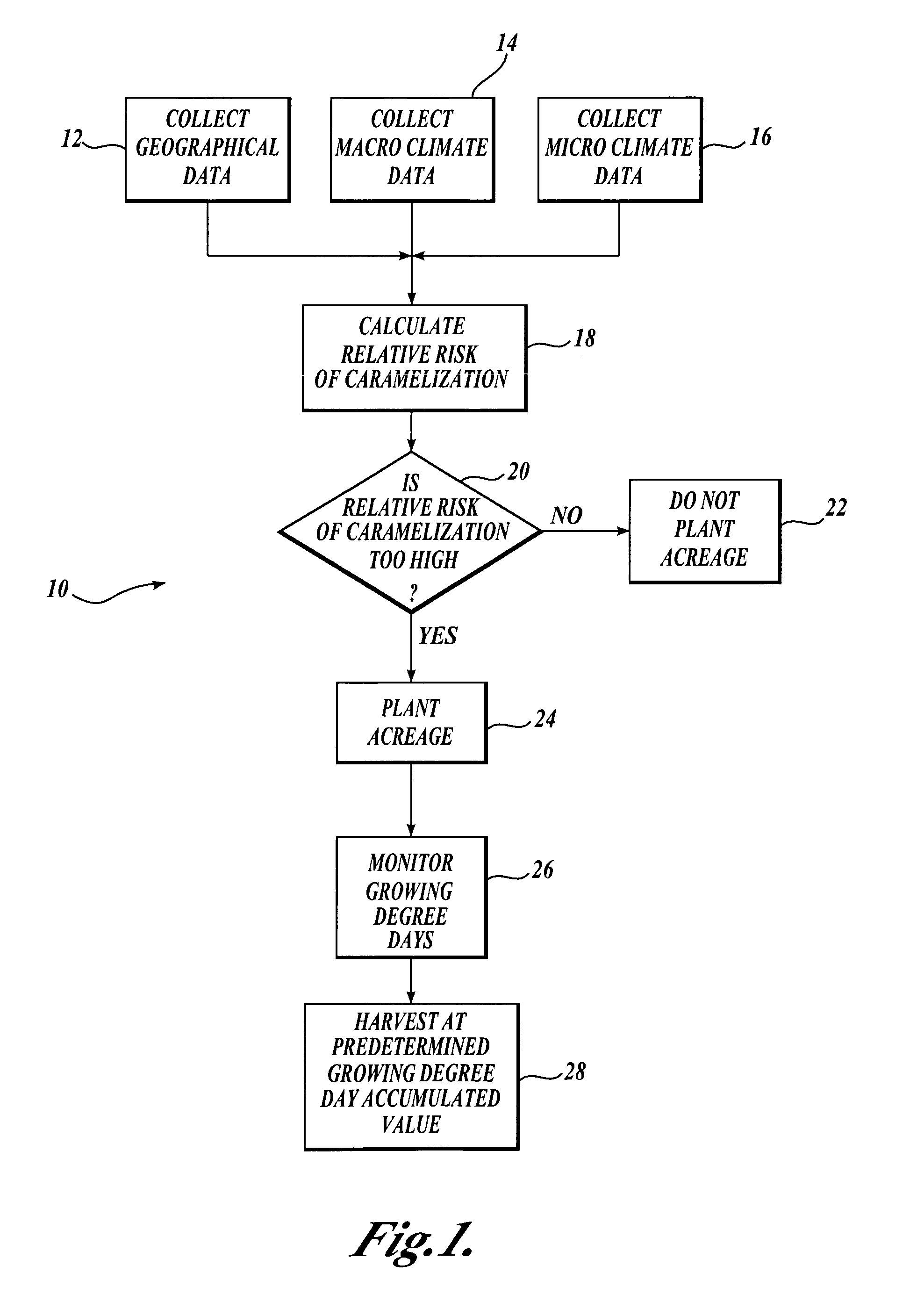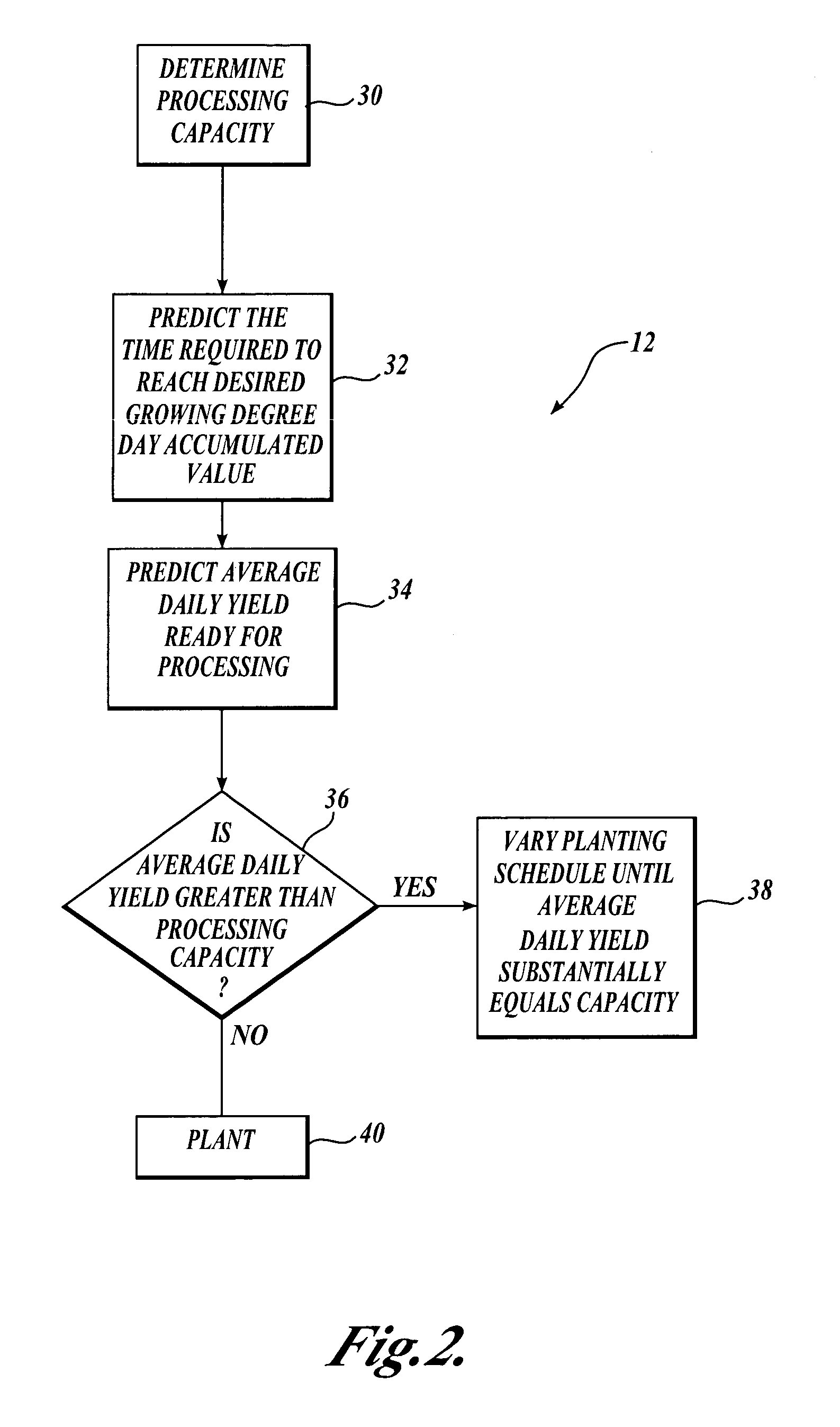Agronomic method for commercial production of the green Cicer bean
a technology of green cicer bean and commercial production, applied in the field of agronomy, can solve the problems of large crop loss, extensive rehydration of dry cicer bean, and high production cos
- Summary
- Abstract
- Description
- Claims
- Application Information
AI Technical Summary
Benefits of technology
Problems solved by technology
Method used
Image
Examples
Embodiment Construction
[0014]The invention provides methods for the commercial production of green Cicer beans. In one aspect of the present invention a method comprises selecting acreage based on relative risk of caramelization for a crop of Cicer beans; planting Cicer beans in the selected acreage; monitoring growing degree days of the selected acreage; and harvesting said Cicer beans when said growing degree days reach a predetermined accumulated value.
I. Selecting Acreage, Seed and Row Spacing
[0015]The Cicer bean prefers fertile, sandy loam soils with good internal drainage. Good drainage is necessary because even short periods of flooded or water-logged fields reduce growth and increase the susceptibility to root and stem rot.
[0016]The green Cicer bean is a cool season annual crop performing optimally in 70–80° F. day time temperatures and 64–70° F. night temperatures. This plant produces good yields in dryer conditions because of a deep tap root system. Heavier rainfall seasons (i.e., over 30 inches...
PUM
 Login to View More
Login to View More Abstract
Description
Claims
Application Information
 Login to View More
Login to View More - R&D
- Intellectual Property
- Life Sciences
- Materials
- Tech Scout
- Unparalleled Data Quality
- Higher Quality Content
- 60% Fewer Hallucinations
Browse by: Latest US Patents, China's latest patents, Technical Efficacy Thesaurus, Application Domain, Technology Topic, Popular Technical Reports.
© 2025 PatSnap. All rights reserved.Legal|Privacy policy|Modern Slavery Act Transparency Statement|Sitemap|About US| Contact US: help@patsnap.com



